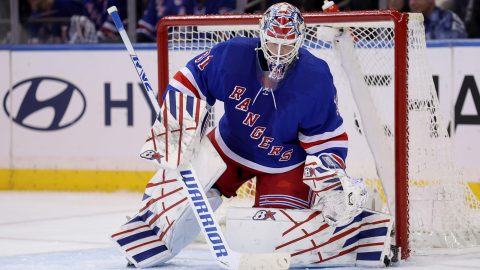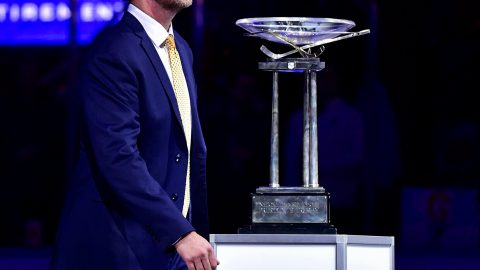Here is the first of two pieces looking at first-half stats that we
think best isolate luck (both good and bad) so we can get a bead on
which pitchers and hitters are most likely to regress and progress for
the balance of the year.
For hitters, we look at outliers (relative to personal history and
league averages) in batting average on balls in play (BABIP), average
with runners in scoring position (BARISP) and percentage of fly balls
that become home runs (HR/FB).
We judge pitchers by Fielding Independent ERA (minus actual ERA),
HR/FB rates and defensive efficiency rating (DER, percentage of balls
in play that become outs). To get the best read on DER outliers, we
factor in a pitcher?s rate of line drives allowed (relative to league
average). Remember, about 75 percent of line drives are hits.
We?re going to look at the unlucky players first. These are players
our model says should perform significantly better in the second half
as their performance in these key metrics gets closer to their
individual and/or league averages. Thus, we do away with the standard
?Buy, Sell, Hold? format. All of the below are ?Buys.?
BABIP
Ian Kinsler, 2B, Rangers: His .238 remains very unlucky. But he?s doing too well in the other categories to get any real market discount.
Jimmy Rollins, SS, Phillies: Maybe he?s on the
wrong side of the mountain, but .240? (League average is .300 and
Rollins was .290 last year and .300 in 2007).
BARISP
Alfonso Soriano, OF, Cubs: He?s hitting .159 with runners in scoring position. Between 2004 and 2008, his BARISP ranged from .231 to .276.
Troy Tulowitzki, SS, Rockies: You have 16 homers and just 37 RBI at the break when you?re hitting .164 with RISP. Last year, .263 and .291 as a rookie.
Also likely to progress in the second half by this metric are Toronto?s Vernon Wells (.177) and Texas? Michael Young (.176).
HR/FB
Russell Martin, C. Dodgers: He?s had about average
power in his past (about 10 percent of his fly balls have been homers).
He now sits at 3.1 percent. Expecting six or seven jacks the rest of
the year makes sense.
David Wright, 3B, Mets: I?ve been to Citi Field and
it?s not the Grand Canyon. And it in no way explains homers on 5.8
percent of fly balls. It?s not like Shea was a band box.
Nick Markakis, OF, Orioles: The small-market
Wright. Homers on 6.5 percent of fly balls is about half his historic
rate, and we expect 25-year-old hitters to get stronger.
Also note that Rollins (5.3 percent) and Wells (6.1 percent) are
both well below recent rates, though Rollins regressed badly last year
(6.6 percent), too.
FIP ERA minus ERA
Ricky Nolasco, P, Marlins: The cat is far out of the
bag and halfway across town by now, but note that Nolasco?s FIP is 2.29
runs per game lower than actual.
Carl Pavano, P, Indians: He?s made a comeback lately, but is still 1.43 runs worse than the 3.70 ERA FIP predicts.
Jorge de la Rosa, P, Rockies: I know, Colorado. But his ERA should be 3.88. He K?s more than one per inning and he throws 95 mph left-handed cheese.
HR/FB
We won?t count Randy Johnson (23 percent, more than twice league average) because he?s out indefinitely with shoulder problems.
Joba Chamberlain, P, Yankees: His rate was 5.2
percent, 6.3 and now 15.1 this year. Lots of hitters counts due to poor
control, I know. But maybe that corrects, too. Some I respect thought
he?d be among the most valuable starting pitchers. And here he sits in
July for the fantasy taking.
Chris Volstad, P, Marlins: Last year, his rate
was 4.7 percent. This year 17.7 percent. Split the difference and the
ERA sinks to about 3.50. Note also his K and walk rates are improved
relative to 2008.
DER
Kevin Slowey, P, Twins: His line drive rate is about
average and thus so should be his DER. Remember, DER ignores homers,
which are not balls in play. So his DER should be .700, not .644. That
results in a huge difference in hits allowed.
Jon Lester, P, Red Sox: His line-drive rate is way
below average (16.7 percent) and yet his DER is a putrid .667. Given
the line drive rate, it should be about .715 or so. And all the
strikeouts are sure outs. So he can be immensely valuable in the second
half.
Pavano also makes the list with his average line-drive rate (19.5
percent) not translating as it should to an average DER. His is .662.
Note that in many ways, though, this list overlaps the FIP ERA list. So
don?t give Pavano full double unlucky credit.



